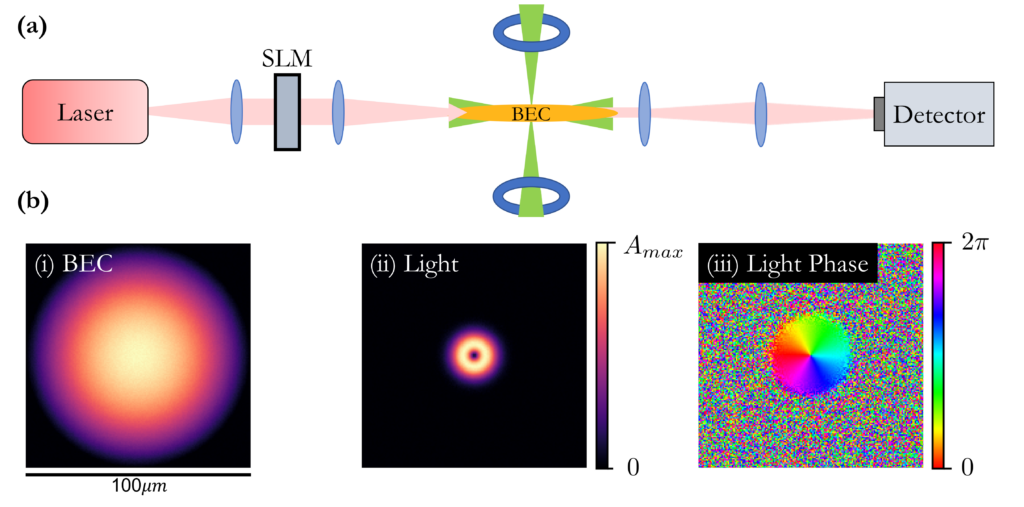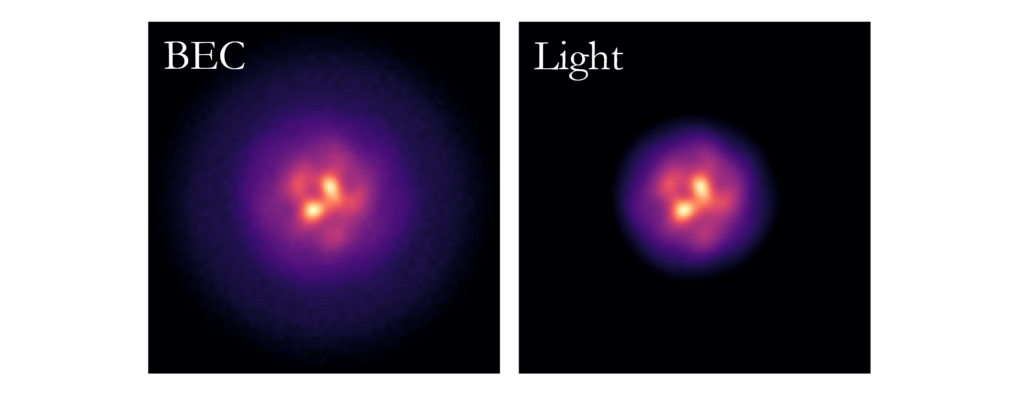Bose-Einstein Condensates (BECs) are a new form of matter with quantum mechanical properties, the super-cooled atoms behaving more like waves and less like discrete atoms. First created in 1995, BECs are coherent matter-wave fields with a well-defined phase that allow the study of a wide range of phenomena and that can be used to probe the boundaries between classical and quantum physics.
G. Henderson, G. R. M. Robb, G.-L. Oppo, and A. M. Yao, “Control of Light-Atom Solitons and Atomic Transport by Optical Vortex Beams Propagating through a Bose-Einstein Condensate”, Phys. Rev. Lett. 129, 073902 (2022).
 In this work, we model the propagation of far-red-detuned optical vortex beams (beams carrying orbital angular momentum) through a Bose-Einstein Condensate, shown on the left.
In this work, we model the propagation of far-red-detuned optical vortex beams (beams carrying orbital angular momentum) through a Bose-Einstein Condensate, shown on the left.
Using nonlinear Schrödinger and Gross-Pitaevskii equations, we initially verify that our model produces coupled BEC-light filamentation patterns on propagating an optical Gaussian field, demonstrating the light-seeking nature of the BEC when in this far-red-detuned regime:

We go on to demonstrate the formation of coupled light/atomic solitons. Using optical vortex modes carrying orbital angular momentum of order m, we observe the formation of a BEC ring to match the optical ring, followed by a coupled fragmentation of both fields. The fields fragment into 2m solitons that rotate azimuthally before moving off tangentially, carrying angular momentum. The number, and velocity, of solitons, depends on the orbital angular momentum of the optical field. A three-dimensional visualisation of the dynamics of the BEC for the m=2 case is shown below.

Finally, we report that using a Bessel-Gauss beam increases radial confinement so that solitons can rotate with fixed azimuthal velocity towards an atomic persistent current. Our model provides a highly controllable method of channelling a BEC and atomic transport, all without the use of complex BEC trapping potentials.